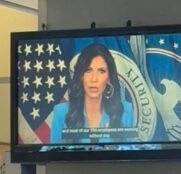Once again, the Oscars have awarded a movie about race told from the perspective of a white protagonist, directed and written by white guys. But you don’t have to settle for Green Book. Tonight the Smithsonian Channel will air a documentary about the actual Green Book, which guided black motorists to safe businesses and lodging all over the country in annual installments from 1936 to 1966. The Green Book: Guide to Freedom was directed by Yoruba Richen (who also directed the 2013 marriage-equality documentary The New Black), who is a black woman, and the vast difference between Hollywood’s Green Book and her film is not lost on her. “We haven’t been in control of our own narrative so that’s what you’re going to get—you’re going to get something like the Green Book fiction film,” she told Jezebel during a phone interview last week.
Richen started working on her doc in 2017 and says she didn’t hear about Peter Farrelly’s movie until she was already in production on her own. Still, she told me that she believes the timing worked out for her. “It’s given us great visibility,” she said.
Her movie is not just about Victor Green’s conception and execution of his Green Book, but touches on a number of attendant issues like the black middle class, the Civil Rights Movement, women business owners, and the predominantly black vacation spot of Idlewild, Michigan. In shedding light on parts of this country’s history rarely discussed in mainstream venues, Richen’s movie overturns a stone and reveals a universe. An edited and condensed transcript of our discussion is below.
JEZEBEL: How did you decide what stories you would tell and what businesses you’d touch on?
It was a process of figuring out where we could go that would be visually interesting, places that were still there like the Gaston Motel, and then also the themes that we were trying to elucidate. I knew early on that I wanted to talk about the black middle class and recreation and where we were going for vacation. That’s not something you normally hear about in terms of the African American experience. So that’s how I figured that Idlewild would be an amazing place to go to and film. Some of the stuff in terms of the women business owners, which is a section in the film, became obvious in terms of looking through the Green Book and seeing who was in there and realizing that there were so many women’s businesses that were listed. It’s a combination of figuring out geographically how we wanted to create a road trip for the viewer and places that we could go and film that were still there and what were the themes we wanted to bring out and elucidate in the film.
The Green Book provides a tangible metaphor for how much of black culture has involved navigating around oppression to find comfort and joy and a tenable life.
Absolutely. One of the interviewees says “a parallel universe.” I think in some ways that still describes what we navigate to. It’s kind of like the veil that Du Bois talks about. I think that’s a them that is very relevant even today.
At what point did you hear about the narrative movie Green Book?
I think it must have been last summer. We heard there was something in the works, but we didn’t know anything specific. And then when the movie was at Toronto [in September 2018], that’s when I really heard about it.
-

-

-

-

-

-

-

-

-

-

-

-

-

-

-

-

-

-

-

-

-

-

-

-

-

-

-

-

-

-

-

-

-

-

-

-

-

-

-

-








































